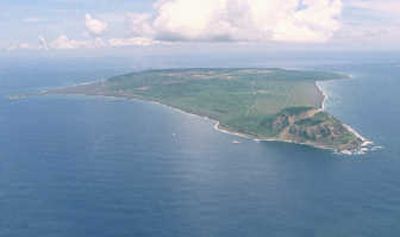Japan changes name of Iwo Jima

TOKYO – Japan has returned to using the prewar name for the island of Iwo Jima – site of one of World War II’s most horrific battles – at the urging of its original inhabitants, who want to reclaim an identity they say has been hijacked by high-profile movies like Clint Eastwood’s “Letters from Iwo Jima.”
The new name, Iwo To, was adopted Monday by the Japanese Geographical Survey Institute in consultation with Japan’s coast guard.
Surviving islanders evacuated during the war praised the move, but others said it cheapens the memory of a brutal campaign that today is inextricably linked to the words Iwo Jima.
Back in 1945, the small, volcanic island was the vortex of the fierce World War II battle immortalized by the famous photograph showing Marines raising the American flag on the islet’s Mount Suribachi.
Retired Marine Maj. Gen. Fred Haynes, who was a 24-year-old captain in the regiment that raised the flag on Mount Suribachi, was surprised and upset by the news.
“Frankly, I don’t like it. That name is so much a part of our tradition, our legacy,” said Haynes.
Before the war, the isolated spit of land was called Iwo To – pronounced “ee-woh-toh” – by the 1,000 or so people who lived there. In Japanese, that name looks and means the same as Iwo Jima – Sulfur Island – but it has a different sound.
The civilians were evacuated in 1944 as U.S. forces advanced across the Pacific. Some Japanese navy officers who moved in to fortify the island mistakenly called it Iwo Jima, and the name stuck. After the war, civilians weren’t allowed to return and the island was put to exclusive military use by the U.S. and Japan, cementing its identity.
Today Iwo To’s only inhabitants are about 400 Japanese soldiers.